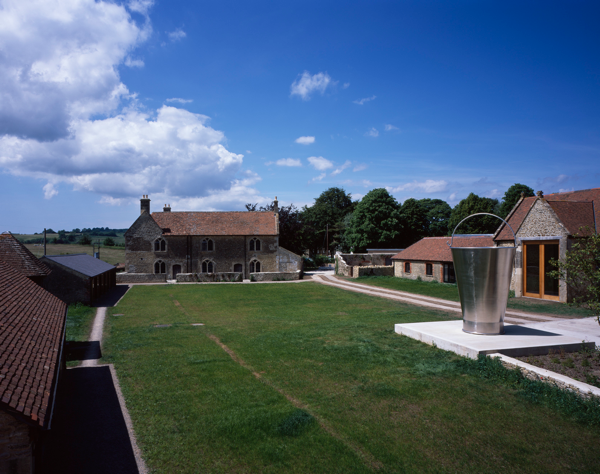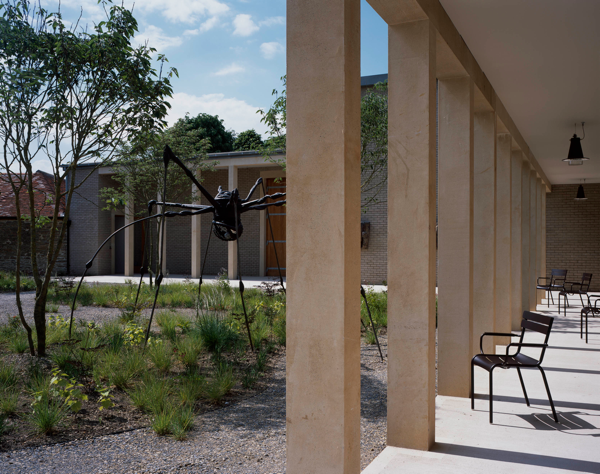Art & Exhibitions
Hauser and Wirth Somerset Opens
Does the future of cultural organizations lie with commercial galleries?

Does the future of cultural organizations lie with commercial galleries?

Coline Milliard

Hauser & Wirth unveils its latest outpost today, Hauser & Wirth Somerset, set deep in the English countryside. It is the blue chip gallery’s sixth branch, after Zürich, London, Los Angeles, and a pair in New York.
Housed in an 18th century farmhouse in the outskirts of Bruton, in the West Country, this new venture is very much part of the commercial gallery’s family, but it champions a particularly philanthropic approach.
“It’s a place where we can do other things and experiment in different ways,” director Alice Workman told artnet News. “Artists can come and spend time through the residency program. It’s a place where we can really develop an education program.”
The architectural team, Laplace & Co. and benjamin + beauchamp, has restored the original buildings and added new ones to create a multi-purpose art center featuring five gallery spaces, a courtyard, and a restaurant.
“There’s so much on offer in cities already,” Workman added, “but somewhere like Somerset, there aren’t any galleries providing art education programs.”

Hauser & Wirth Somerset, Inner Cloister. Left: Louise Bourgeois, Spider (detail) (1994)
Photo: © The Easton Foundation
Alongside a major new commission by Phyllida Barlow, Hauser & Wirth Somerset will welcome a two-week theater school this summer, in collaboration with the Old Vic Theatre in Bristol.
Other forthcoming highlights include an exhibition of drawings by the garden designer Piet Oudolf (best-known for his work at London’s Olympic Park). His so-called “perennial meadow,” a vast garden with over 26,000 plants, was commissioned by the gallery and will be unveiled this September.
While it isn’t unusual for art dealers to showcase their personal collection, or give them to the nation—Anthony d’Offay’s donation, displayed as Artists Rooms throughout the country, comes to mind—Hauser & Wirth is experimenting with a new model, one in which commercial, educational, and philanthropic activities run alongside each other.
As funding cuts continue to challenge the arts in the UK, the initiative raises important questions about the potential role of art dealers in supporting non-profit ventures. When asked by artnet News if she thought the future will see more gallerists stepping up to “fill the gap” left by dwindling state support, Hauser & Wirth Somerset’s director Workman answered: “It’s impossible to know really, I think naturally in the art world at the moment there are more private foundations, museums, and collections opening. We are heading in that direction.”
“What that means for the public galleries I don’t know,” continued Workman, who has spent most of her career working in the public sector. “I still very much think that public galleries need all the support they can get.”